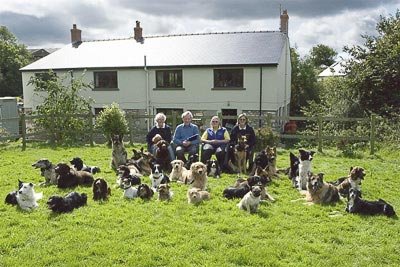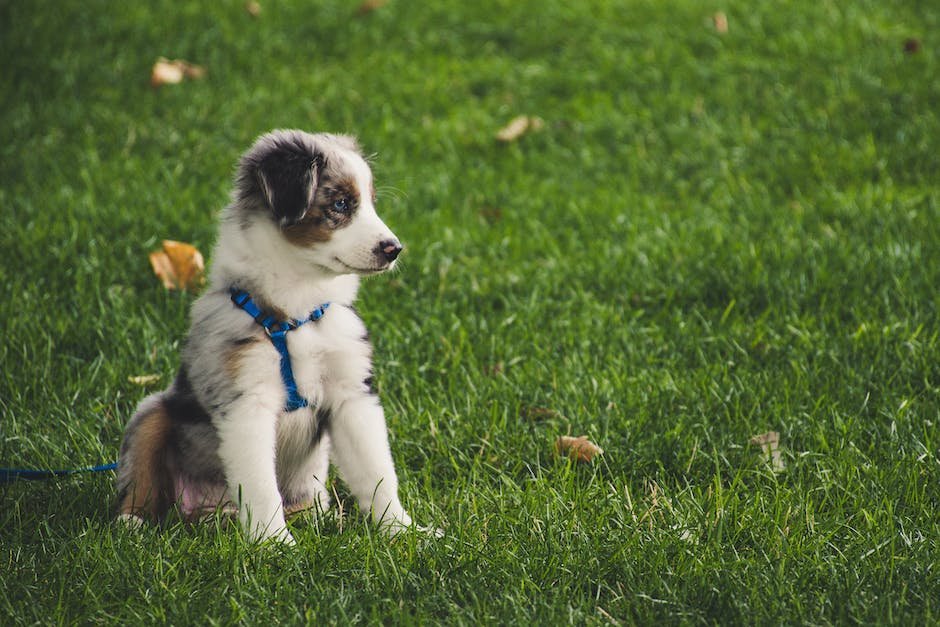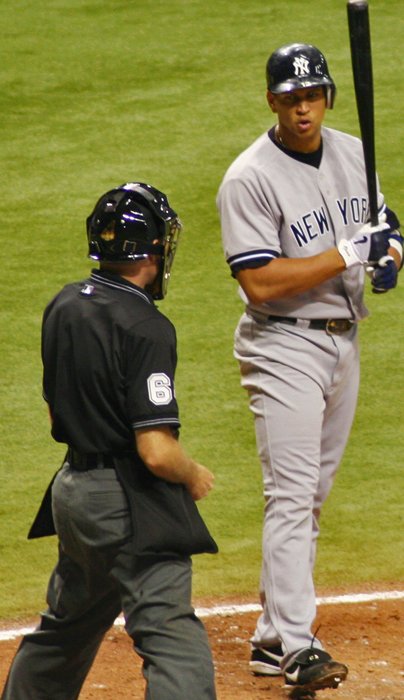Mischief whispers in tiny paws and gleams in mischievous puppy eyes. As the newest addition to your household, your furry bundle of joy brings unparalleled happiness and endless entertainment. However, alongside the boundless energy and unwavering loyalty, you may find yourself grappling with an age-old canine behavior: mouthing and nipping. Fear not, for in the realm of puppy training, gentle guidance reigns supreme. By wielding patience and understanding, you can pave the way towards a harmonious coexistence, where those adorable nibbles evolve into graceful displays of affection. So, grab some treats, adjust your mindset, and embark on a journey of training your puppy’s mouth into a soft, gentle touch that both you and your mischievous companion can cherish.
Table of Contents
- The Importance of Gentle Guidance in Puppy Training for Mouthing and Nipping
- Understanding the Natural Behavioral Patterns of Puppies
- Effective Techniques for Redirecting Mouthing and Nipping Behavior
- Creating a Positive Training Environment for Your Puppy
- Building Trust and Bonding through Consistent Reinforcement Strategies
- Q&A
- Closing Remarks

The Importance of Gentle Guidance in Puppy Training for Mouthing and Nipping
When it comes to puppy training, one crucial aspect that cannot be overlooked is addressing the issue of mouthing and nipping. Puppies explore the world around them through their mouths, and while it may be cute at first, it’s essential to redirect this behavior towards more appropriate outlets. Gentle guidance during this phase of development is paramount in shaping a well-behaved and socialized adult dog.
Redirecting Attention: Using positive reinforcement techniques is key in puppy training. Whenever your puppy starts to mouth or nip, redirect their attention to an appropriate chew toy or bone. This helps them understand the difference between acceptable and unacceptable biting behavior. Remember to always praise and reward your puppy when they choose the toy over your hands or furniture, reinforcing their appropriate responses.
Consistency: Consistency is vital in teaching your puppy good behavior. Ensure that everyone in the household is on the same page regarding the rules. If one person allows biting while another discourages it, your puppy will become confused and find it challenging to learn. By creating a consistent environment, your puppy will learn faster and become more receptive to gentle guidance.
Positive Reinforcement: Never use punishment or physical force when training your puppy. Instead, focus on positive reinforcement techniques. Reward your puppy for calm and gentle behavior with treats, toys, or verbal praise. Positive reinforcement strengthens the bond between you and your puppy and helps them understand that being gentle leads to pleasant experiences.
By providing gentle guidance during the mouthing and nipping phase, you are not only teaching your puppy proper manners but also setting the foundation for a well-behaved adult dog. Patience, consistency, and positive reinforcement will go a long way in shaping your puppy’s behavior and fostering a strong bond between you and your furry friend.

Understanding the Natural Behavioral Patterns of Puppies
Bringing a new puppy into your home can be an exciting and joyous experience. However, it’s important to understand that puppies have unique natural behavioral patterns that are crucial to grasp in order to provide them with the proper care and training. By understanding these patterns, you can create a nurturing environment that supports their development and well-being.
Inherent Curiosity: Puppies are naturally curious creatures, constantly exploring their surroundings with boundless energy. Their curiosity allows them to learn about their environment, develop their senses, and build their confidence. Encourage this behavior by providing safe and stimulating toys, allowing them to investigate their surroundings, and engaging them in positive playtime experiences.
Socialization Skills: It’s important to recognize that puppies are inherently social animals. They have a natural inclination to form social bonds, both with humans and other animals. To help them develop healthy socialization skills, expose them to a variety of people, animals, and experiences from an early age. This includes regular visits to the vet, puppy classes, and supervised interactions with well-behaved dogs. Remember to always reinforce positive behaviors and provide gentle guidance during socialization sessions.
Bite Inhibition: Just like human babies, puppies explore the world around them by using their mouths. It’s crucial to understand that biting is a natural behavior for puppies. However, guiding them towards bite inhibition is essential to prevent the development of aggressive behavior. Engage in appropriate, interactive play with your puppy and redirect their biting behavior towards chew toys. If they do bite too hard, let out a high-pitched yelp to simulate how their fellow littermates would react, teaching them the importance of gentle play.
By recognizing these natural behavioral patterns in puppies, you can provide them with an environment that nurtures their development, fosters positive socialization, and promotes a harmonious relationship between you and your furry friend.

Effective Techniques for Redirecting Mouthing and Nipping Behavior
Mouthing and nipping behavior can be a common issue among puppies and even some adult dogs. While it may seem harmless at first, it’s important to address this behavior early on to prevent it from developing into a habit that can be challenging to break. Here are some effective techniques to redirect your dog’s mouthing and nipping behavior:
- Provide appropriate chew toys: Dogs often mouth and nip out of a natural instinct to explore their surroundings. By offering a variety of appropriate chew toys, you can fulfill their need to chew and redirect their attention away from inappropriate objects or body parts.
- Redirect with positive reinforcement: Whenever your dog starts mouthing or nipping, discourage the behavior by gently redirecting their attention to an appropriate activity, such as playing with a toy or participating in obedience training. Reward them with praise or treats when they engage with the desired behavior, reinforcing their understanding of what is acceptable.
- Use a taste deterrent: In cases where redirection alone is not enough, you can apply a taste deterrent, specially designed for pets, to objects or areas your dog frequently mouths or nips. The unpleasant taste will help discourage them from continuing the behavior, promoting a more positive and enjoyable environment for both you and your pup.
Remember, consistency and patience are key when addressing mouthing and nipping behavior. With time and proper training techniques, you can help your furry friend develop appropriate chewing habits and create a stronger bond between you.
Creating a Positive Training Environment for Your Puppy
When it comes to training your new furry friend, creating a positive environment is key to their success. Here are some simple tips to help you establish a harmonious training routine:
- Set clear boundaries: Puppies thrive on consistency. Clearly define what behaviors are acceptable and what are not. This will help your pup understand what is expected of them and prevent confusion.
- Use positive reinforcement: Rather than focusing on punishment, reward your puppy for good behavior. This can be done through treats, praise, or affection. By associating positive experiences with desired actions, you’ll motivate your pup to repeat them.
- Create a safe space: Puppies need a secure and comfortable environment to learn effectively. Designate a specific area for training, free from distractions and potential dangers. This will help your pup stay focused and reduce any anxiety they may feel.
Remember, patience and consistency are the keys to success when training your puppy. By creating a positive training environment and providing your furry companion with love and guidance, you’ll be well on your way to establishing a well-behaved and happy pup!
Building Trust and Bonding through Consistent Reinforcement Strategies
When it comes to building trust and fostering strong bonds, consistency is key. By implementing consistent reinforcement strategies, you can create an environment that promotes trust, strengthens relationships, and encourages growth and development. Let’s explore some effective approaches that can help you achieve these goals:
- Clear Communication: Open and honest communication is essential in any relationship. Consistently maintaining clear and transparent communication channels allows for effective collaboration and understanding. Encourage open dialogue, active listening, and provide timely feedback to build trust and strengthen bonds.
- Setting Expectations: Clearly defining expectations and consistently reiterating them helps establish a sense of predictability and reliability. Establishing realistic goals and delivering on promises promotes trust and creates a foundation for building stronger relationships.
- Recognition and Rewards: Consistently recognizing and rewarding achievements or efforts is a powerful way to reinforce positive behavior and build a sense of belonging. This can be done through verbal praise, written acknowledgments, or even small tokens of appreciation. Celebrating successes together fosters a spirit of camaraderie and trust within a group.
Remember, takes time and dedication. By prioritizing clear communication, setting expectations, and recognizing achievements, you can create an environment where trust flourishes and meaningful connections are forged.
Q&A
1. Why do puppies engage in mouthing and nipping behavior?
Puppies explore the world using their mouths, and mouthing is a natural part of their development. Nipping, on the other hand, can be a form of playful interaction or a way to seek attention.
2. Is mouthing and nipping dangerous?
While mouthing and nipping might be cute during puppyhood, it can become problematic as they grow older. Uncontrolled nipping can lead to accidental injuries or develop into aggressive behavior, making it crucial to address the issue early on.
3. What are some gentle techniques to discourage mouthing?
Redirecting your puppy’s attention to appropriate chew toys, using a gentle “no” command, or yelping to mimic a littermate’s reaction can help discourage mouthing behavior in a compassionate way.
4. How can I teach my puppy not to nip?
Teaching your puppy bite inhibition is essential. Gradually reduce the pressure of bites through yelping or saying “ouch” when nipped too hard. Reward them when they respond appropriately with less force, helping them understand what is acceptable.
5. Are there any training tools I can use?
Whilst many training tools exist, gentle approaches are usually recommended. Chew toys, anti-chew sprays, and positive reinforcement techniques, such as rewards and praise, can be more effective than relying on harsh aids like pinch or shock collars.
6. How long does it usually take for a puppy to learn proper biting inhibition?
The time it takes for a puppy to learn appropriate biting inhibition varies based on their temperament and consistency in training. However, with patience and regular practice, most puppies can show significant improvement within a few weeks or months.
7. Should I punish my puppy for nipping?
Punishing your puppy for nipping is not recommended. It can create fear or anxiety, hindering the training process. Instead, focus on redirecting their behavior, reinforcing positive choices, and rewarding them when they engage appropriately.
8. What if my puppy’s mouthing behavior persists?
If your puppy’s mouthing behavior persists despite consistent training, consult a professional dog trainer or behaviorist who can assess the situation and provide tailored guidance to address any underlying issues or refine your training techniques.
Closing Remarks
As we bring this delightful journey of puppy training for mouthing and nipping to a close, it’s evident that gentle guidance has proven to be the beacon of light amidst these playful chompers. With an enchanting mix of firmness and tenderness, we have embarked on a mission to teach our furry friends the art of self-control.
As we bid farewell to those irresistible puppy nibbles, let us celebrate the moments of triumph and patience, cherishing the memories of teeth sinking into our shoes or shoelaces. Those precious learning experiences have woven a unique bond between us and our playful companions, solidifying the foundations of trust and understanding.
Remember, teaching our pups the difference between gentle kisses and sharp nips is no easy feat. It requires resilience, consistency, and the willingness to give our time and attention unconditionally. By channeling our inner guides, we have transformed these mischievous moments into opportunities for growth and connection.
Through gentle guidance, we have allowed ourselves to embark on an adventure of compassion and empathy. We have learned to decipher the language of our beloved pups; discovering when they crave affection or when they simply desire some space to explore the world around them. These skills will undoubtedly create a harmonious coexistence, enriching our lives with the undeniable joy that only a wagging tail and a wet nose can bring.
As we conclude this chapter, we urge you to continue showering your puppies with love, patience, and the gentle guidance they need to navigate this unpredictable world. Remember to celebrate their accomplishments, no matter how small, and be ready to pivot and adapt. The journey to a well-mannered companion may be long and winding, but with the gentle guidance you’ve acquired, you can rest assured that success is just around the corner.
So go forth, dear reader, armed with your newfound understanding and the power of gentle guidance. Witness your puppies transform into well-behaved, respectful dogs who can charm the hearts of all they encounter. Embrace the challenges, celebrate the victories, and revel in the remarkable bond that blossoms when we choose to guide our pups through the mesmerizing dance of training with kindness and love.
Farewell, fellow puppy trainers, as you embark on this beautiful adventure of raising a gentle soul, for it is in the tiniest moments of guidance that we leave a lasting paw print on their hearts.
As an affiliate, my content may feature links to products I personally use and recommend. By taking action, like subscribing or making a purchase, you’ll be supporting my work and fueling my taco cravings at the same time. Win-win, right?
Want to read more? Check out our Affiliate Disclosure page.
